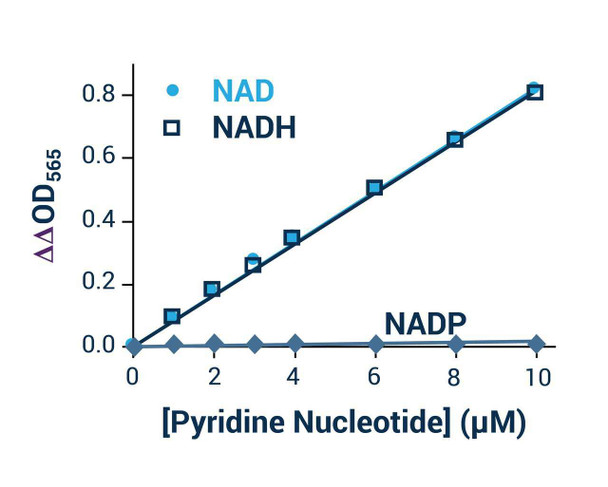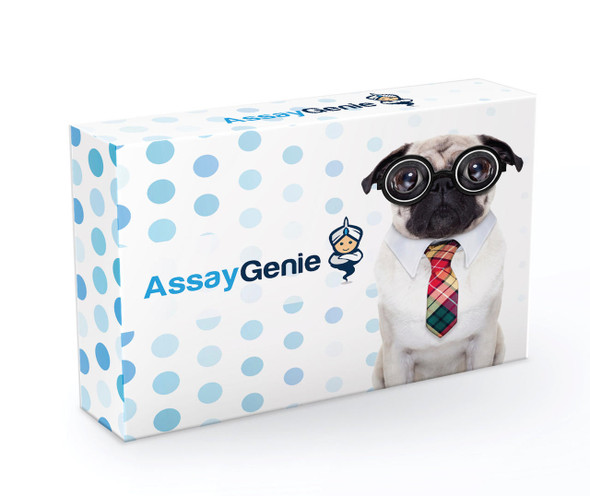

NAD/NADH Assay Kit - Information
Assay Genie's NAD/NADH assay kit is based on a lactate dehydrogenase cycling reaction, in which the formed NADH reduces a formazan (MTT) reagent. The intensity of the reduced product color, measured at 565 nm, is proportional to the NAD/NADH concentration in the sample. This assay is highly specific for NAD
+/NADH and with minimal interference (<1%) by NADP
+/NADPH. Our assay is a convenient method to measure NAD, NADH and their ratio.
Applications
For sensitive determination of NAD and NADH and evaluation of drug effects on NAD/NADH metabolism.
NAD/NADH Assay Kit - Key Features
- Sensitive and accurate. Detection limit of 0.05 uM and linearity up to 10 uM NAD+/NADH in 96-well plate assay.
- Convenient. The procedure involves adding a single working reagent, and reading the optical density at time zero and 15 min at room temperature.
- High-throughput. Can be readily automated as a high-throughput 96-well plate assay for thousands of samples per day.
NAD/NADH Assay Kit - Data Sheet | |
| Kit Includes | Assay Buffer: 10 mL Enzyme A: 120 mL Lactate: 1.5 mL Enzyme B: 120 mL MTT Solution: 1.5 mL NAD Standard: 0.5 mL NAD/NADH Extraction Buffers: each 12 mL |
| Kit Requires | Pipetting (multi-channel) devices. Clear-bottom 96-well plates and plate reader. |
| Method of Detection | OD565nm |
| Detection Limit | 0.05 uM |
| Samples | Cell or tissue extracts |
| Species | All |
| Protocol Length | 15 min |
| Size | 100 tests |
| Storage | Store all reagents at -20°C. |
| Shelf Life | 6 months |
More Details
Pyridine nucleotides play an important role in metabolism and, thus, there is continual interest in monitoring their concentration levels. Quantitative determination of NAD
+/NADH has applications in research pertaining to energy transformation and redox state of cells or tissue. Simple, direct and automation-ready procedures for measuring NAD
+/NADH concentration are very desirable.








